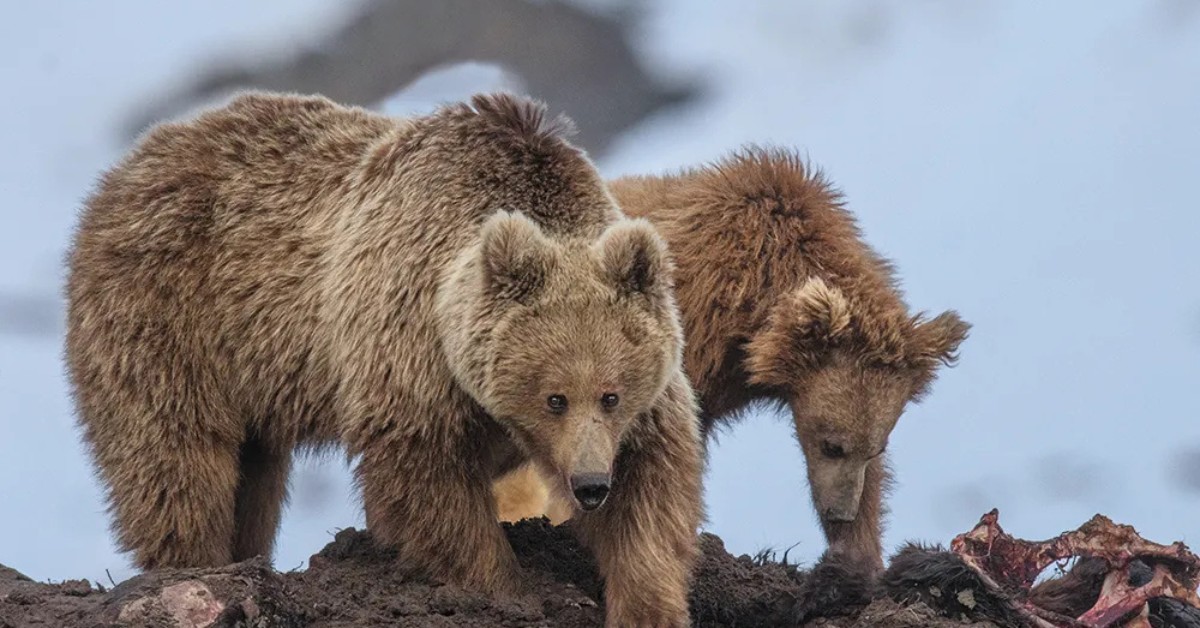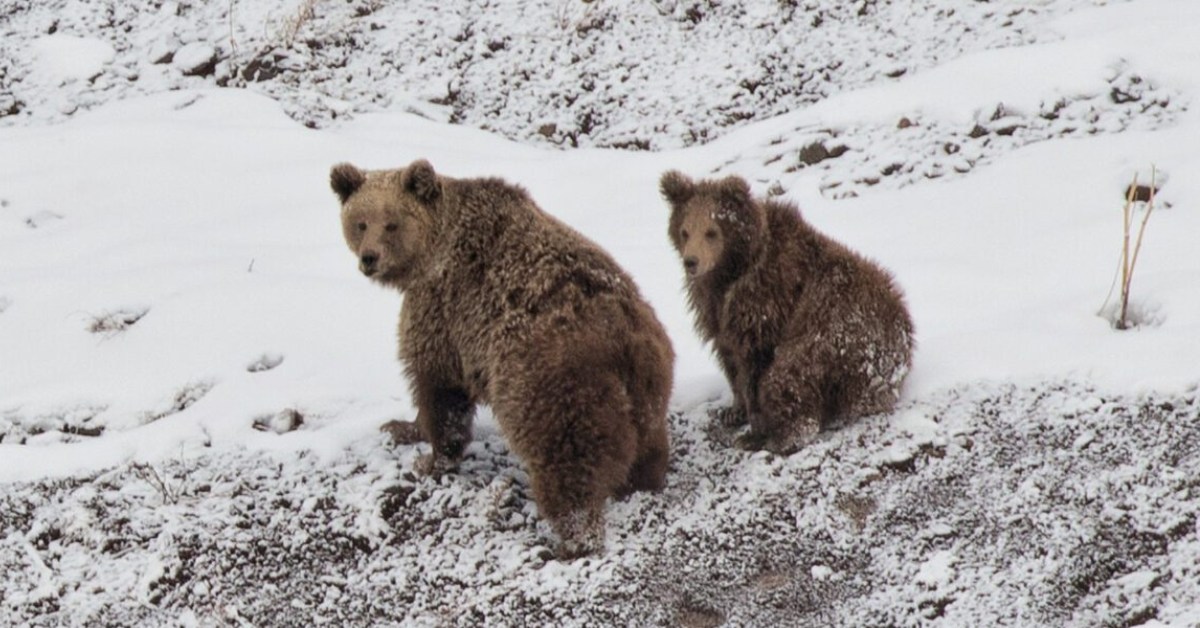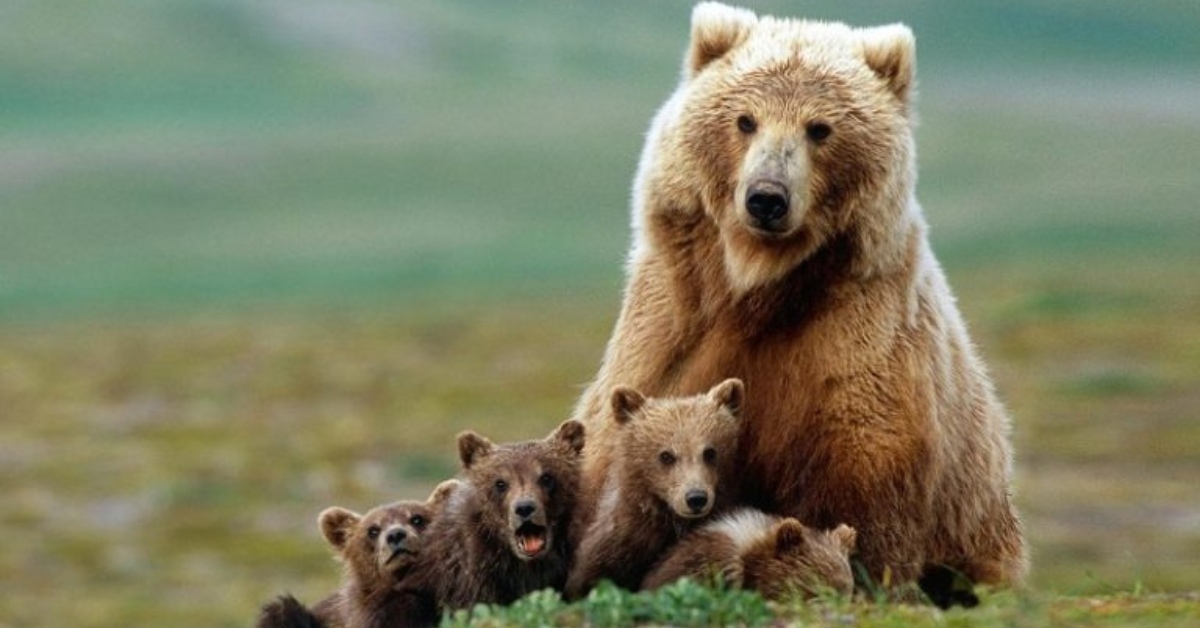Rare Sighting in Kargil: Adorable Himalayan Brown Bear Cub Follows Its Mother Through the Wild
High up in the stark landscapes of Kargil, photographer Karamjeet Singh’s camera rolled on a scene both serene and powerful: a Himalayan brown bear mother padding across a rocky slope, tiny cub trailing close behind. The wind, the mountains, and the stillness held this rare moment in their embrace — a glimpse of life that feels almost timeless.
For the western Himalayas, such encounters were once almost unheard of. Just a decade ago, spotting these bears in this part of their range was close to impossible. Today, every sighting feels like a fragile promise that hope is still alive in these mountains.
The bear that rules the heights
Himalayan brown bears are among the largest land carnivores in India. Adults can weigh up to 300 kg, though they remain smaller than their grizzly cousins in North America and Europe. Their range stretches from Kargil through Kashmir, Himachal Pradesh, and Uttarakhand.
But that range is shrinking. Roads slice through alpine meadows, pastures stretch further into slopes, and conflict along the Line of Control fragments their habitats. These giants of the high mountains now walk a narrowing path.
 Found from Kargil to Uttarakhand, the Himalayan brown bear survives in some of India’s harshest mountain landscapes. Picture source: Discover Wildlife
Found from Kargil to Uttarakhand, the Himalayan brown bear survives in some of India’s harshest mountain landscapes. Picture source: Discover Wildlife
When bears come to the villages
As natural food sources dwindled, bears often wandered into villages — especially in summer — searching through garbage, livestock pens, even homes. “This led to a surge in human-bear conflict,” said Niazul Khan, an ecologist from Kargil who now works with the Wildlife Institute of India.
In places like Drass, families stopped rearing goats and sheep after repeated bear raids. For mountain communities already facing harsh winters and limited access, losing these traditional livelihoods struck hard.
 Adult Himalayan brown bears can weigh up to 300 kg, yet remain elusive in India’s western Himalayas. Picture source: LIFE on the PLANET LADAKH
Adult Himalayan brown bears can weigh up to 300 kg, yet remain elusive in India’s western Himalayas. Picture source: LIFE on the PLANET LADAKH
How communities are answering back
Amid these challenges, small but determined efforts are reshaping the narrative. The Himalayan Brown Bear Trust in Kargil works with locals to reduce conflict and create new sources of income.
They train village youth as nature guides, run awareness programmes, and support initiatives like Punare, where women craft felt bear toys to sell across India, turning a symbol of wildlife into an opportunity for empowerment.
In July 2025, the Trust conducted a 10-day Nature Guide Training, backed by regional partners and Royal Enfield, giving young people the tools to build careers in sustainable tourism and wildlife education.
 Adult Himalayan brown bears can weigh up to 300 kg, yet remain elusive in India’s western Himalayas. Picture source: Coniferous Forest
Adult Himalayan brown bears can weigh up to 300 kg, yet remain elusive in India’s western Himalayas. Picture source: Coniferous Forest
Signs of recovery across the range
In India, researchers and conservation groups are working to map corridors that reconnect fragmented habitats and improve bear survival. These efforts aim to reduce conflict hotspots, preserve genetic diversity, and create landscapes where wildlife and people can coexist.
Why this moment matters
What Karamjeet Singh captured reflects something rare in today’s world: coexistence. It spoke to the patient work of communities and conservationists, and the delicate balance required to let life endure in these mountains.
A mother bear and her cub walking these slopes is not a picture of the past — it is a question for the future: will we leave enough room for them to return?
News